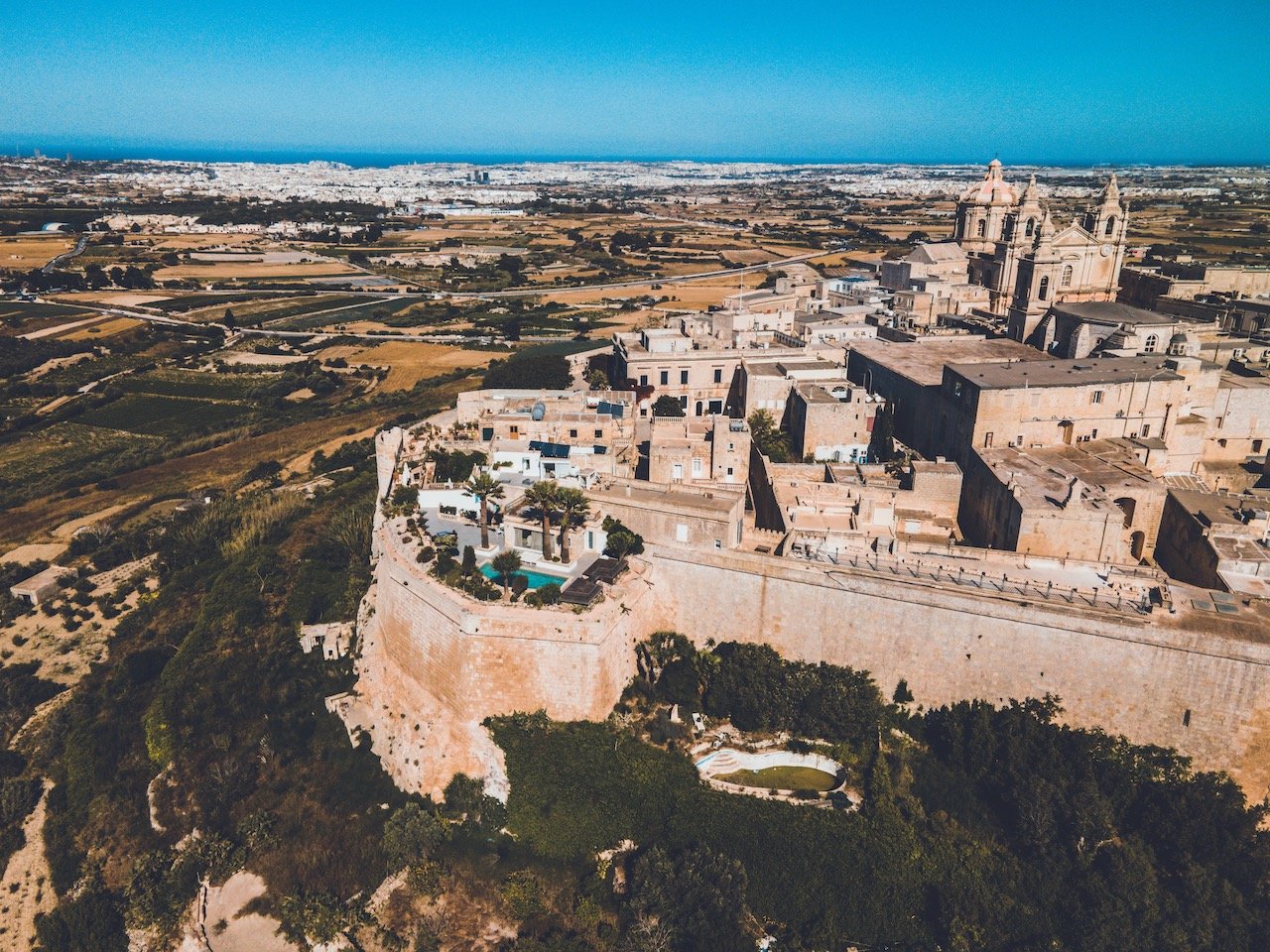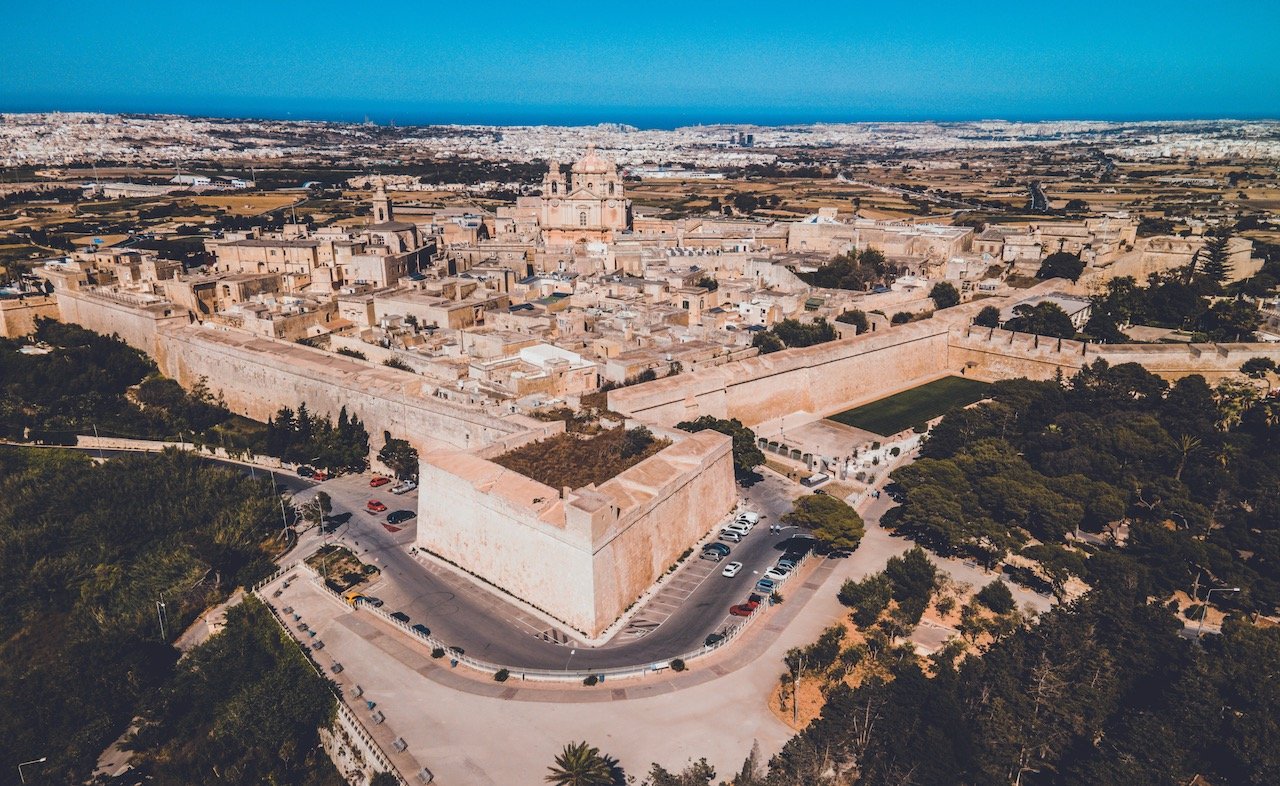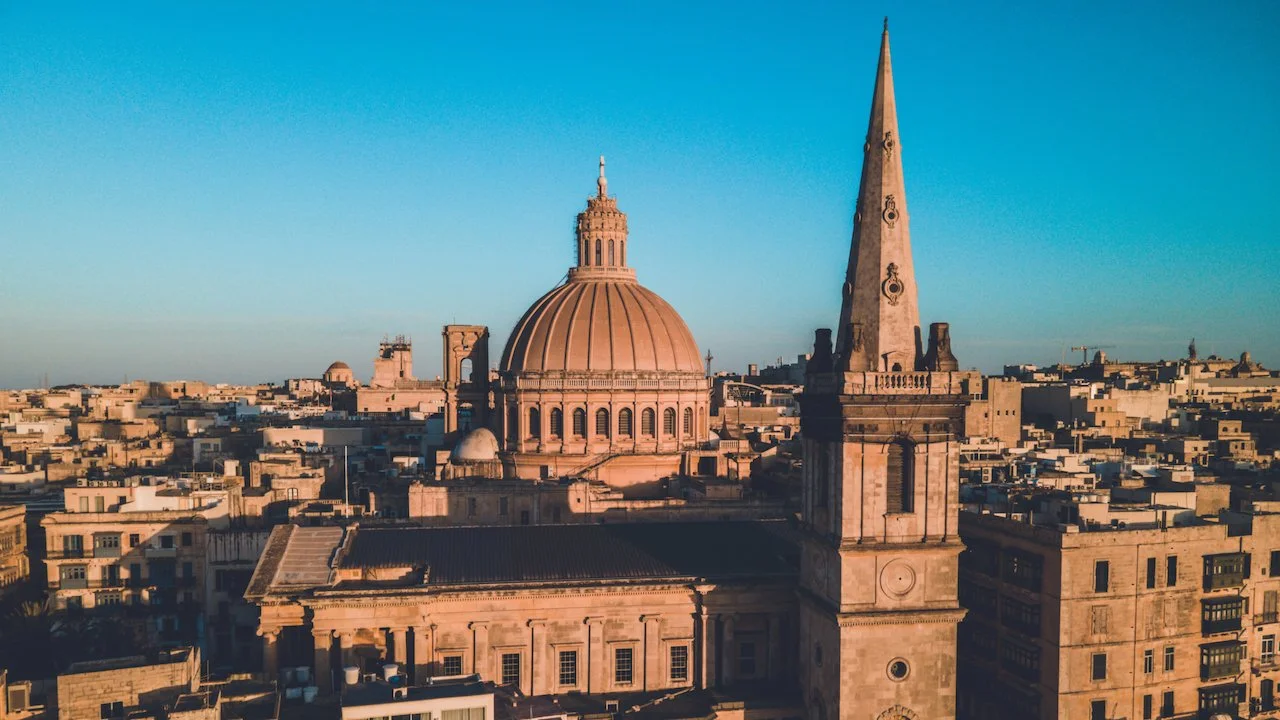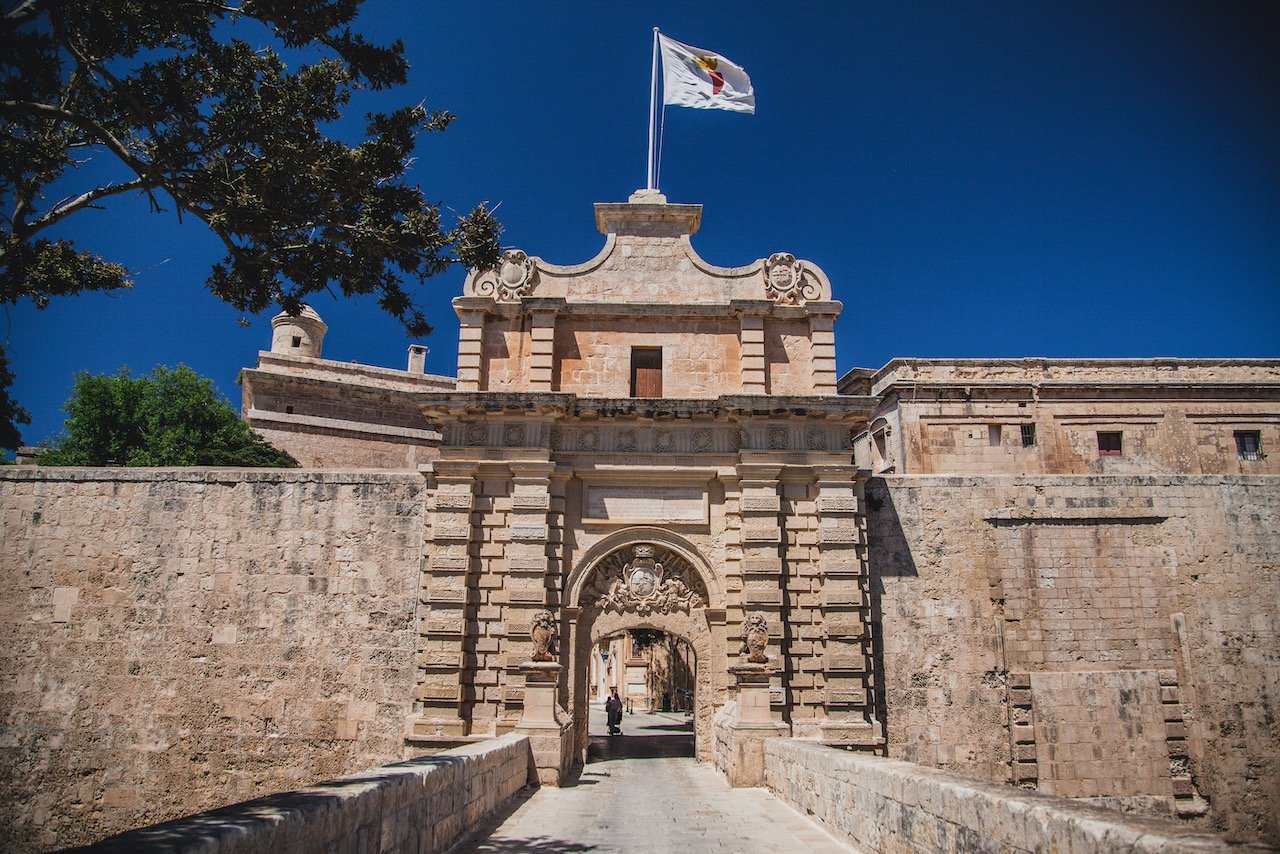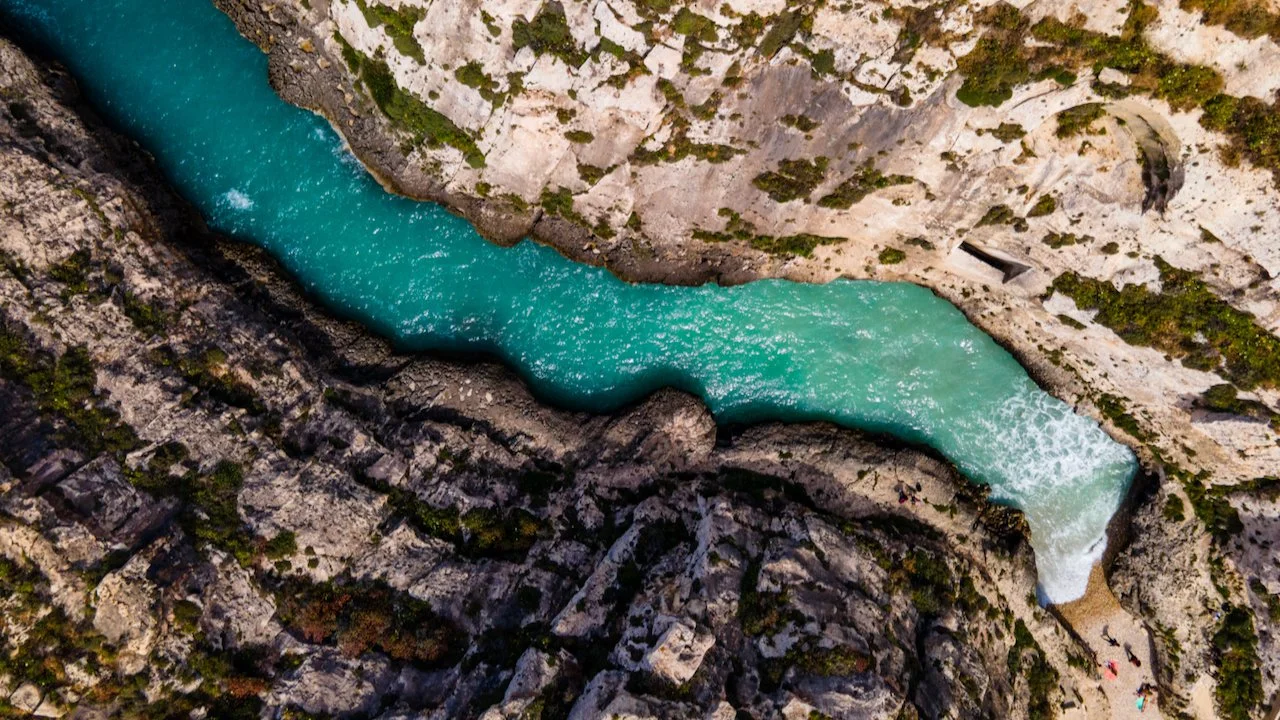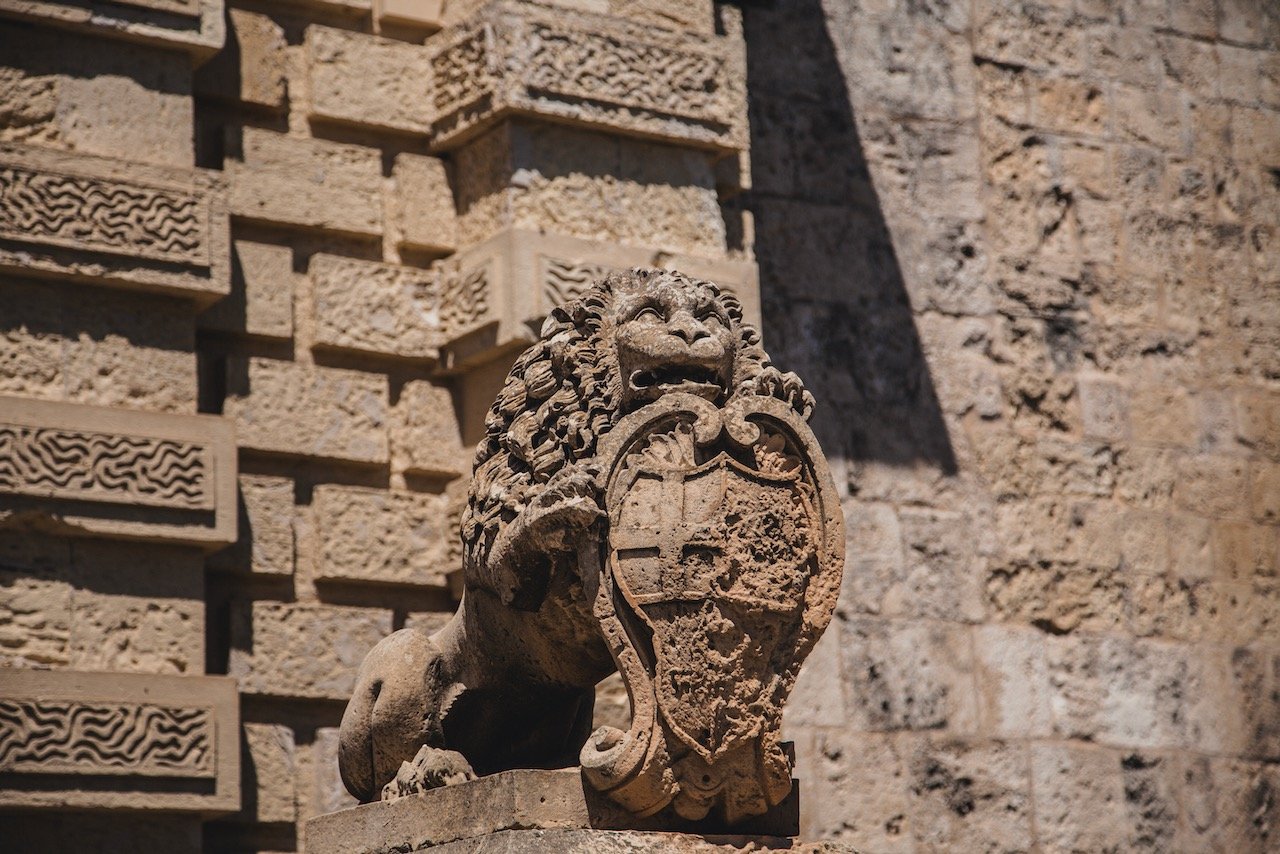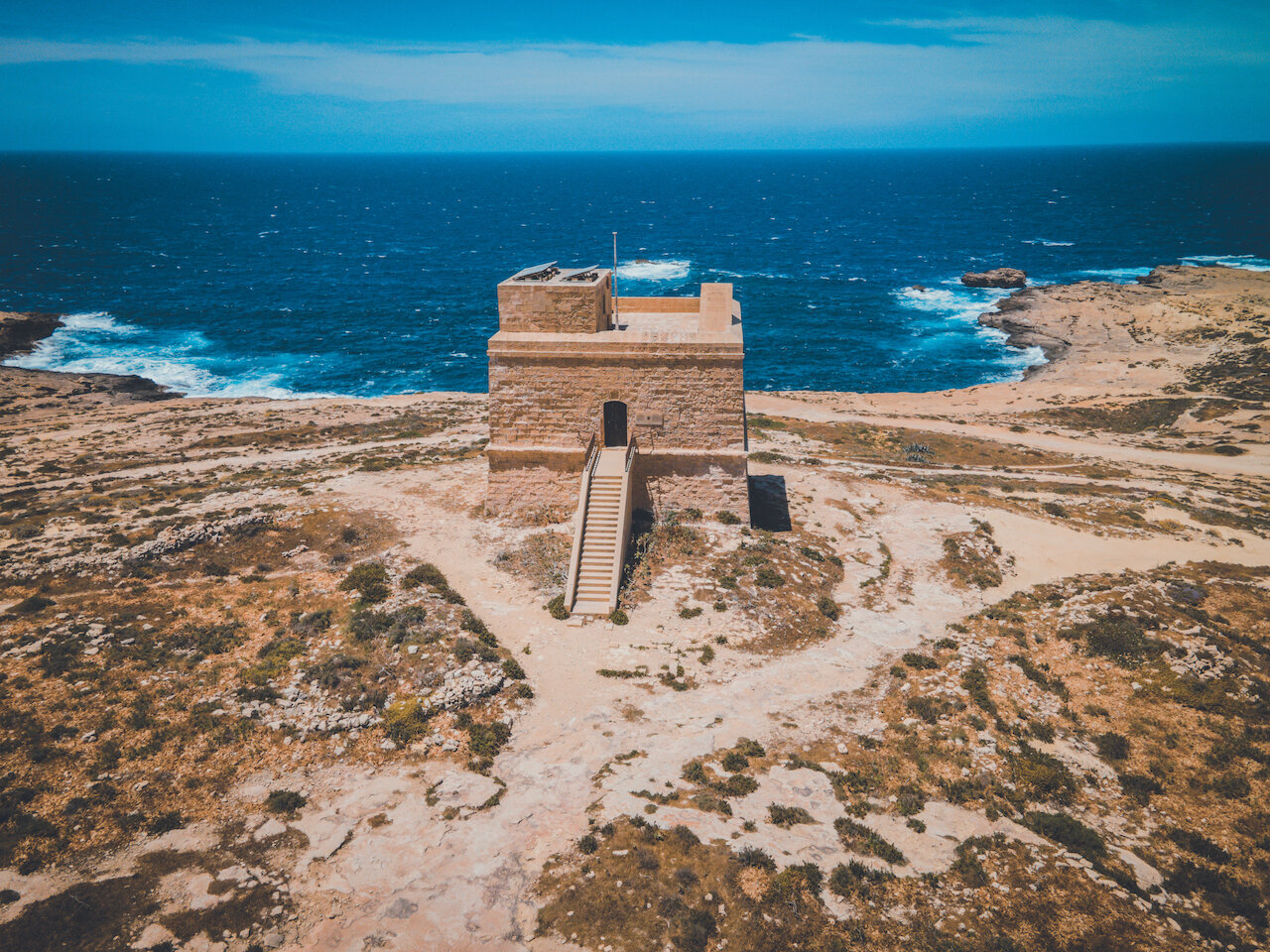A Guide to the City of Mdina in Malta
(Some links in this post are affiliate links. If you click through and take action, I'll be compensated.) If you are also interested in any PRINTS from any of my posts, be sure to check out my store where you can buy prints as posters, in metal/wooden frames or on canvas.
Mdina is a must see city while you are traveling through Malta. It is a fortified city that served as the capital of Malta until the medieval period. It only has a population of 250, but is located adjacent to the city of Rabat, with 11,000 inhabitants.
The origins of Mdina go back to prehistorical periods as a the Phoenician colony of Ann was established here in the 8th century BC. It has Roman and Byzantine influences but became populated by Baroque elements in the 18th century when the city experienced a revival.
However, since the capital of Malta moved from Mdina to Birgu in 1530, its importance has declined over the centuries, giving it the name the ‘Silent City’. Nonetheless, the city is well worth visiting and one of the most popular places to see while in Malta.
Check out my drone video of Malta below!
You can see all my Malta related blog posts below:
Valletta (A Tour through Valletta, the Capital City of Malta)
Mdina (A Guide to the City of Mdina in Malta)
The Island of Malta (A trip to the archipelago of Malta: The Main Island)
The Island of Gozo (A trip to the archipelago of Malta: The Island of Gozo)
The Island of Comino (A trip to the archipelago of Malta: The Island of Comino)
Summary (A Guide to Malta: Valletta, Mdina, Gozo, Comino, and Malta)
How to get to Mdina
Getting to Mdina is the easiest from Valletta, the capital of Malta. As discussed from my Blog Post about Valletta, once you have arrived at Malta International Airport, you can many options with which to get around the country. This includes by taxi, ride share (Uber and Bolt), shuttle bus, public bus, and rental car.
Because Malta is a small island, I found the public bus system to be the most cost effective and efficient during my trip. I also stayed in Valletta, which serves as the origin of many of the bus routes.
You can take the 50, 51, 52, 53, or 56 bus lines to the city of Rabat, and walk about 5 minutes to reach the main gate of Mdina. Bus fares are typically 2 Euros and bus 53 in particular will be the most direct bus route to Mdina.
Here are some of the best sites to see while in Mdina:
Mdina Gate
You will undoubtedly enter the Mdina complex through the Mdina Gate, otherwise known as the Vilhena Gate. Featured in the show Game of Thrones, it was built in 1724 in the Baroque style and is the main gate leading into Mdina.
Mdina Cathedral (St. Paul’s Cathedral)
St. Paul’s Cathedral, also known as the Mdina Cathedral is dedicated to St. Paul the Apostle and founded in the 12th century AD. The tradition states that it was built on the site where St. Paul met the governor at the time Publius when St. Paul was shipwrecked on Malta.
Given the propensity for earthquakes, the cathedral was significantly damaged in the 1693 Sicilian earthquake. It was since dismantled and built again in the common Baroque style of the times around the turn of the 17th century by Lorenzo Gafà. The cathedral is even considered his masterpiece.
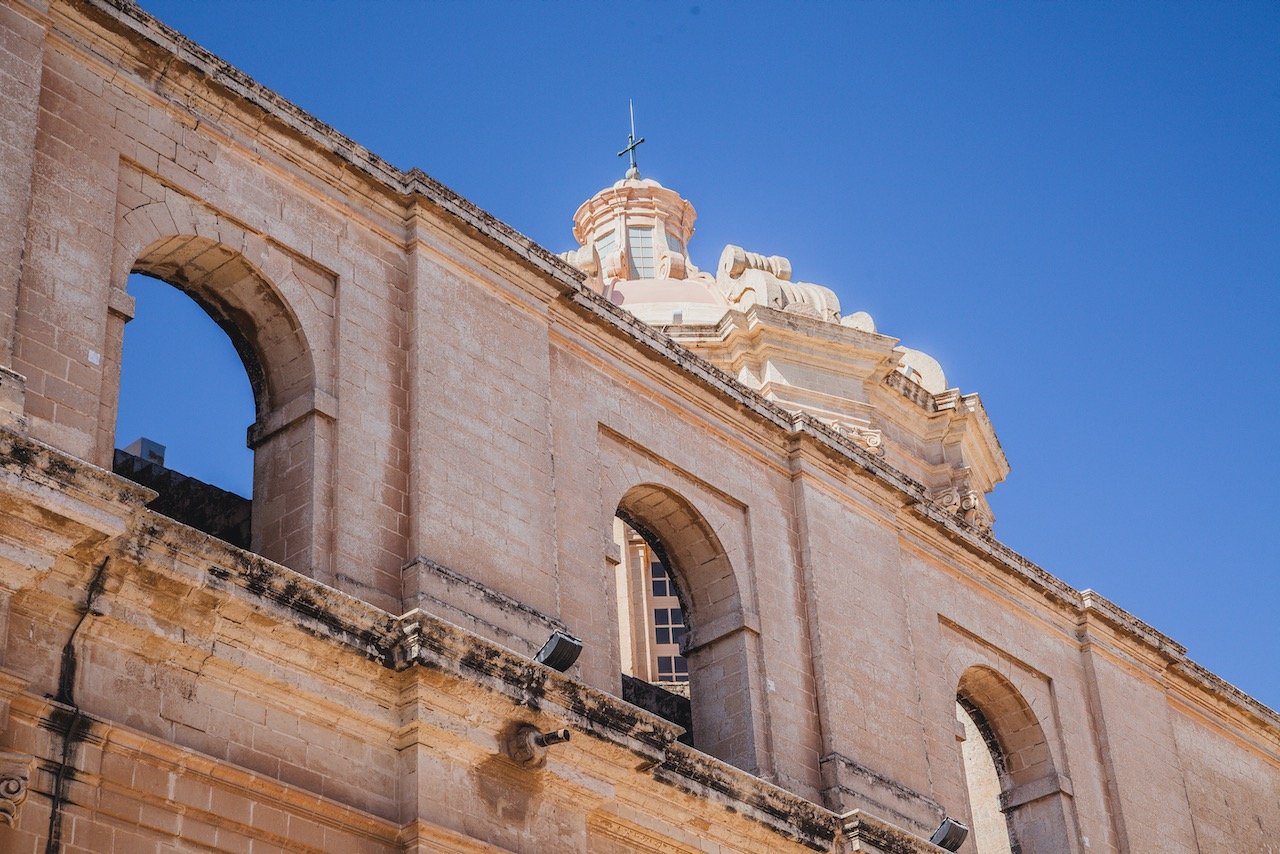
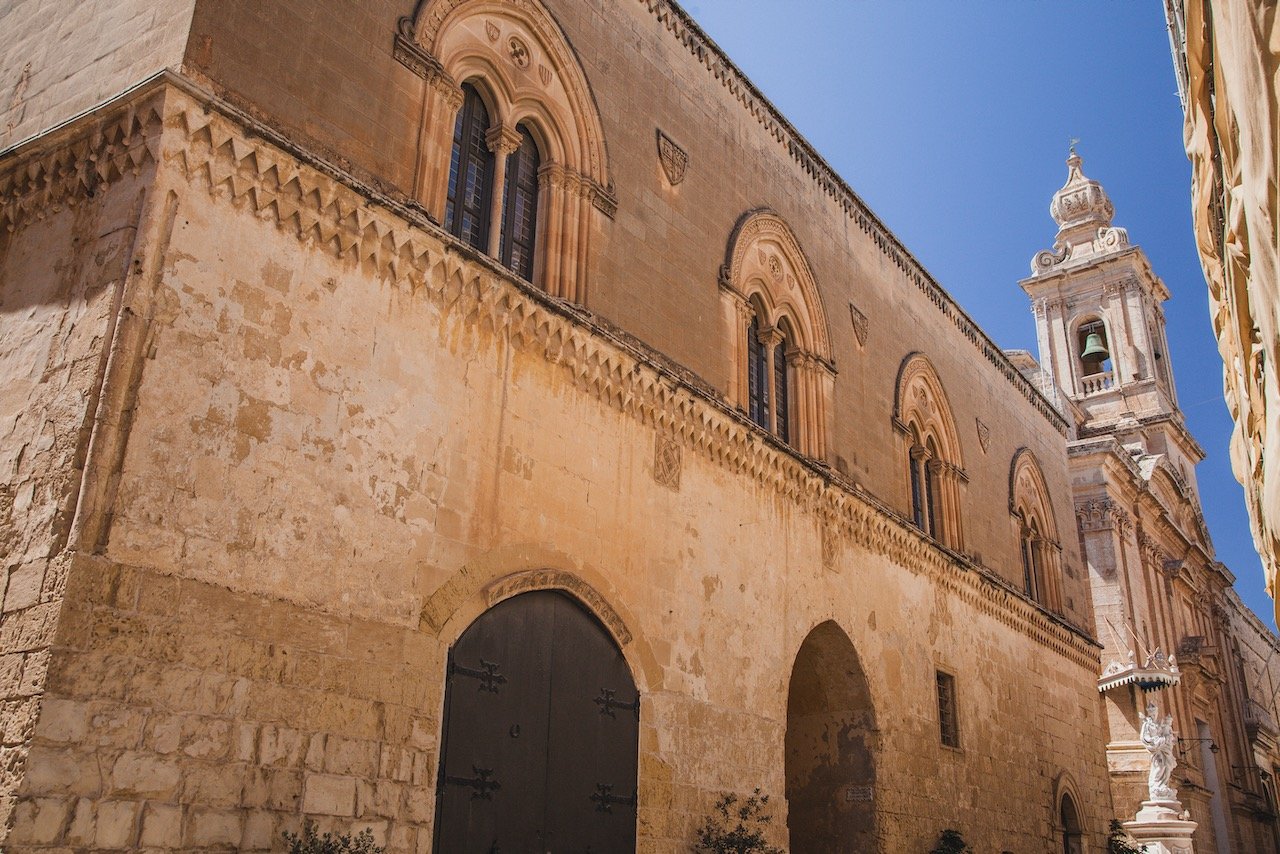
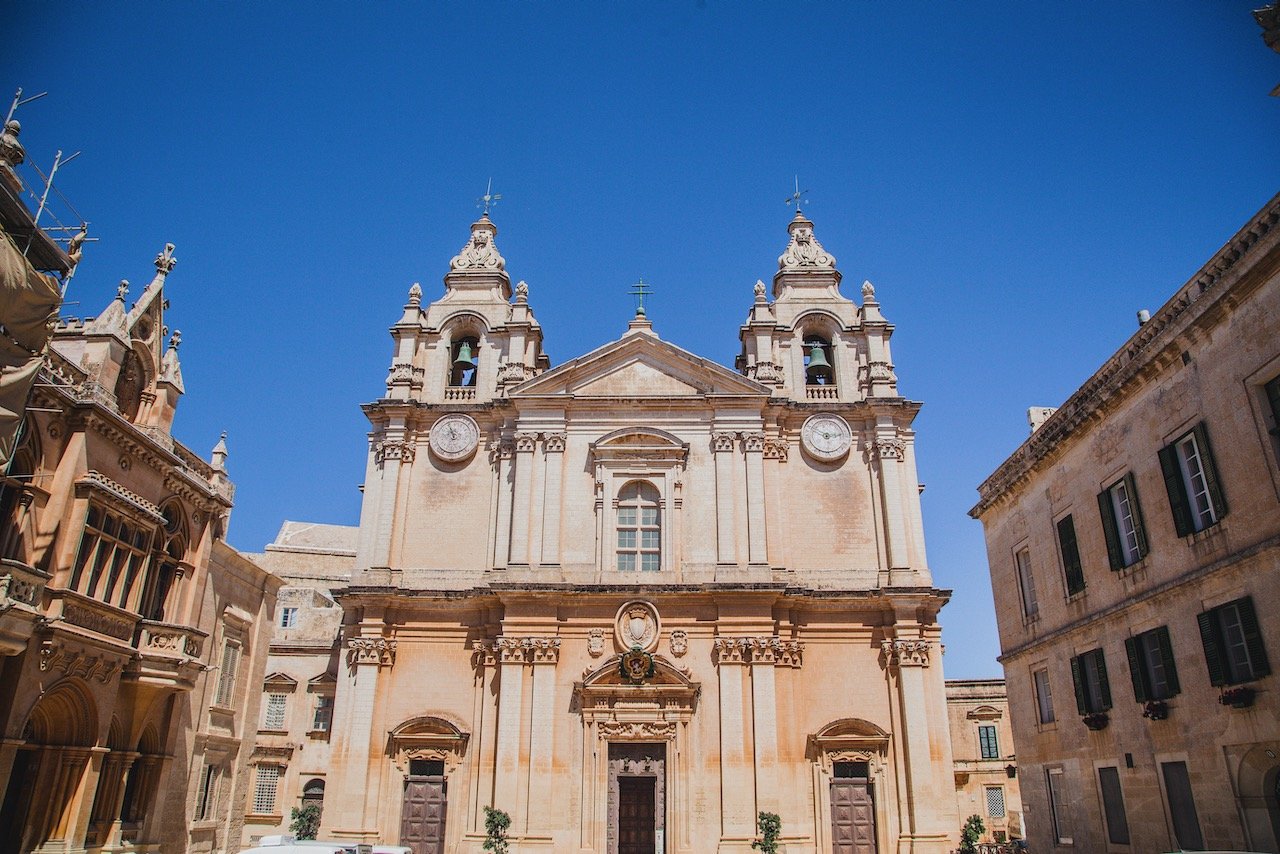
St. Paul’s Catacombs
The Catacombs of St. Paul are managed by Heritage Malta and is an extensive system of tombs and rooms that go back to between the 3rd and 8th centuries CE. Luckily for you, a substantial amount of the ruins are open to the public even though they are part of a larger cemetery area. They were first found and investigated back in 1894.R
Vilhena Palace
The Vilhena Palace is also known as the Magisterial Palace and the Palazzo Pretorio. It is a French Baroque palace named after António Manoel de Vilhena who commissioned it. Built between 1726 and 1728, it was used as a hospital in the 19th and 20th centuries, known as Connaught Hospital. Currently, it serves as the Malta National Museum of Natural history and open to the public.
Palazzo Santa Sofia
Located in Villegaignon Street in Mdina sits the Palazzo Santa Sofia. Situated just across cathedral square, this palazzo is thought to be the oldest surviving building in Mdina, with origins dating back to 1233. The upper floors however are much more modern with construction taking place as recent as the 20th century.
If you like some of my photos that you have come across, just know that I have many prints showcasing a variety of landscapes, including in Malta, available for purchase below! (Sold as Posters, Canvas, or in Metal-Frames and Wooden-Frames).
Municipal Palace
The Municipal Palace, otherwise known as the Banca Giuratale was built in the 18th century but presently serves its purpose as the National Archives of Malta.
Corte Capitanale
The Corte Capitanale currently serves as the Mdina City Hall, which makes sense since it used to be a courthouse. It was also built around 1726, like the Palazzo Vilhena, in the Baroque style by French architect Charles François de Mondion.
Chapel of St. Agatha
The Chapel of St. Agatha was built on the site of an older structure in the 17th century. It is a small Roman Catholic Church, built on the ruins of a medieval chapel that itself was built in 1417. Like many of the buildings in Mdina in 1693, it sustained severe damage in the Sicilian Earthquake. The current chapel was therefore rebuilt by renowned architect Lorenzo Gafà.
